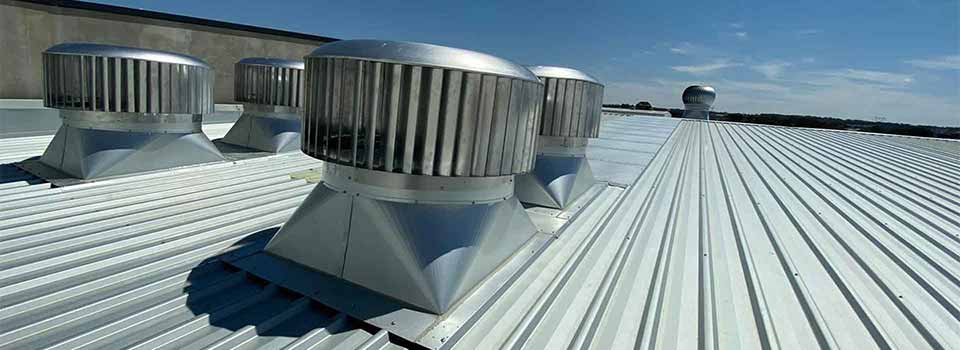
Proper ventilation is crucial for maintaining a healthy and productive environment in industrial buildings. In this blog post, we will explore innovative strategies and techniques for effectively ventilating industrial buildings, ensuring optimal air quality, temperature control, and energy efficiency.
- Understanding the Importance of Ventilation in Industrial Buildings:
Ventilation plays a vital role in industrial settings, where various pollutants, heat, and moisture are generated. It helps remove contaminants, control temperature and humidity levels, and prevent the buildup of harmful gases. By ensuring adequate ventilation, businesses can create a safer and more comfortable working environment for employees while complying with health and safety regulations. - Assessing Ventilation Requirements:
Before implementing a ventilation system, it is essential to assess the specific requirements of the industrial building. Factors such as building size, occupancy, types of pollutants, and local climate conditions need to be considered. Conducting a thorough assessment will help determine the appropriate ventilation design and equipment needed for optimal performance. - Natural Ventilation Techniques:
Utilizing natural ventilation techniques can significantly reduce energy consumption and costs. Incorporating features such as operable windows, louvers, and vents can facilitate the flow of fresh air into the building. Additionally, designing the building layout to maximize cross-ventilation and utilizing natural wind patterns can enhance the effectiveness of natural ventilation. - Mechanical Ventilation Systems:
In cases where natural ventilation is insufficient, mechanical ventilation systems can be employed. These systems utilize fans, ducts, and filters to control and distribute airflow. Advanced technologies, such as variable air volume (VAV) systems and demand-controlled ventilation (DCV), can optimize energy efficiency by adjusting ventilation rates based on occupancy and pollutant levels. - Exhaust Systems for Contaminant Removal:
Industrial processes often generate pollutants that need to be effectively removed from the building. Installing exhaust systems, such as local exhaust ventilation (LEV) and fume hoods, near pollutant sources can capture and remove contaminants at the source, preventing their dispersion into the surrounding environment. - Air Filtration and Purification:
To ensure high indoor air quality, industrial buildings can benefit from air filtration and purification systems. High-efficiency particulate air (HEPA) filters, activated carbon filters, and UV germicidal irradiation systems can effectively remove airborne particles, odors, and microorganisms, creating a healthier and safer working environment. - Monitoring and Maintenance:
Regular monitoring and maintenance of ventilation systems are crucial to ensure their optimal performance. Implementing sensors and controls can help monitor air quality, temperature, and humidity levels, allowing for timely adjustments and preventive maintenance. Regular filter replacement and system cleaning are also essential to maintain efficiency and prevent system failures.
Conclusion:
Efficiently ventilating industrial buildings is essential for promoting a healthy and productive work environment. By understanding the specific requirements, utilizing natural and mechanical ventilation techniques, implementing exhaust systems, and ensuring proper air filtration and maintenance, businesses can achieve optimal ventilation, improve air quality, and enhance energy efficiency in their industrial facilities.
